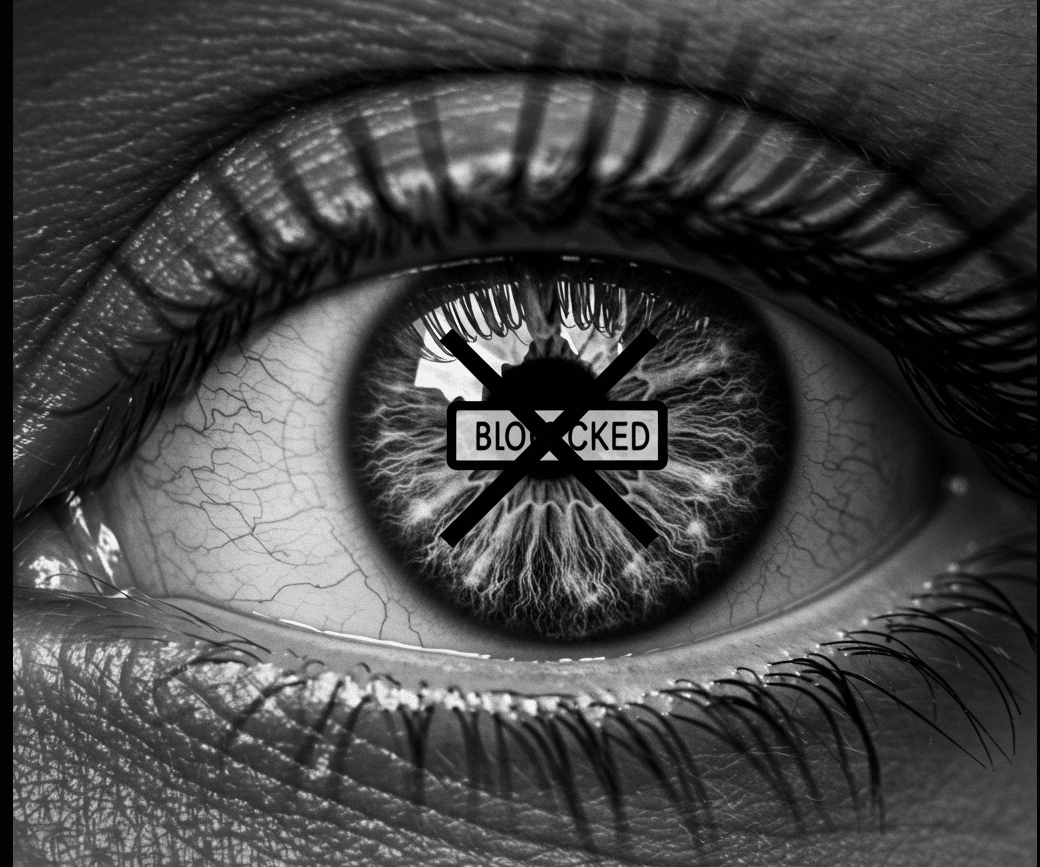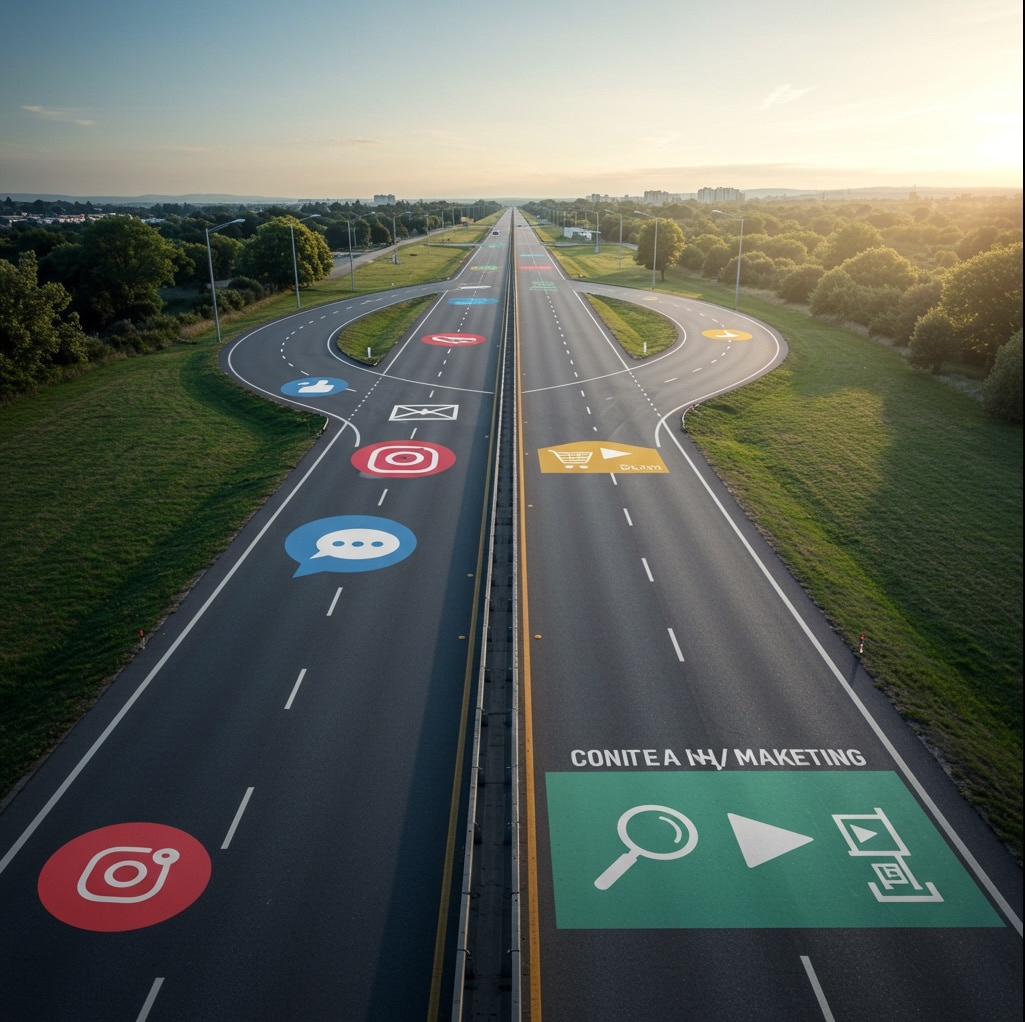Consumers are constantly bombarded with ads, whether they’re passing billboards on the way into work or scrolling their social media feeds. Over time, this has led to something known as banner blindness, which means many of those advertising messages have become little more than white noise. If you’re investing in digital ads, banner blindness wastes money, so understanding banner blindness is the first step toward creating ads that combat it.
What Is Banner Blindness?
Banner blindness is a marketing term that refers to the way consumers tend to ignore advertisements in favor of focusing on the other information in front of them. Over years of browsing the web, the typical online user has become accustomed to looking past paid advertisements without even realizing they’re doing it.
“Human minds naturally block advertisements from view, and it occurs especially when those ads appear in standard placement areas above or next to webpage content,” says Tracie Crites, chief marketing officer at Heavy Equipment Appraisal. “The effectiveness of ads has decreased because viewers no longer stop to notice them.”
Why Website Users Will Ignore Your Ads
Before you can battle banner blindness, you first need to understand it. Here are some of the top reasons consumers might skip your ads without registering them.
They’re Focused on a Task
When consumers land on a website, they’re usually focused on a specific goal, whether it’s researching a product, reading a news story, or looking for specific information. Ads that don’t help them reach that goal will be filtered out as they search for the information they need.
To get around this type of tunnel vision, advertisers no longer focus on blasting the same ad to everyone who visits a particular page. Instead, they’re increasingly using AI-powered tools to deliver messages based on user intent rather than user identity. In other words, ads are delivered in real time based on the information the user is consuming.
Users Shut Out Familiar Patterns
By now, most consumers have spent years engaging with online content. That means they’re accustomed to typical website layouts: They know ad banners usually appear at the top, bottom, and sides of the page and that pop-ups have an exit or skip button. That makes it easy for them to shut out those ads in favor of reaching their goal.
To stay relevant, today’s marketers need to find innovative ways to present ad content to consumers. This might be carousels, vertical ads, or immersive visuals that break the pattern and grab their attention.
Ads Aren’t Relevant
Users are even less likely to pay attention to an ad that has no relevance to them. If they aren’t in the market for a new appliance, for instance, they’re likely to ignore the appliance ads at the top of the page. Remarketing tools can help you reach the right customers, but privacy regulations have made that more challenging.
Intent-based targeting has become a popular way for advertisers to get around these challenges. This type of targeting protects user privacy because it focuses on someone’s current online activity, rather than displaying ads based on demographics or identity.
4 Reasons to Reduce Banner Blindness
Overcoming banner blindness can help you make the most of every ad dollar you spend. Here are some ways it will help you gain a competitive edge:
1. Increase Ad Engagement
If your ads are designed to catch the eye of the users who view them, you’re far likelier to see engagement. By going outside traditional online ads, you can take your marketing efforts to the next level, increasing both visibility and engagement.
2. Improve User Experience
Let’s face it — ads can get in the way of a good user experience. At best, a customer will battle the distractions and notice your branding, increasing awareness. At worst, the customer leaves the site, frustrated, and thinks less of your brand as a result. To reduce that risk, many marketers are now looking for ways to get the right ads in front of the right consumer at precisely the right time.
3. Boost Return on Ad Spend
Every dollar you spend on ignored ads is a dollar wasted, so anything you do to prevent banner blindness can protect your ad budget. Automation tools that optimize your bidding strategy and the delivery of your creative can help you make the most of your ad spend.
Download Taboola's Creative Best Practices for 2025 Playbook
4. Enhanced Brand Recall
When customers ignore an ad, they never see your branding. However, if your ad is related to their interests and blends well with the site, they’re more likely to remember you. When they see information about your brand on other channels, that familiarity could lead to clicks and conversions.
Measuring Banner Ads Interactions
Now that we’ve explored banner blindness, it’s time to look at ways to monitor how it might be impacting your campaigns. Below are a few metrics to track to ensure your efforts are gaining traction.
Click-Through Rate
The first metric to monitor is click-through rate (CTR), which is simply a measurement of how many users click on your ad relative to those who see it. If your CTRs are disappointing, banner blindness could be the cause, but it could also be that your ads simply aren’t reaching the right consumers.
If your CTRs are low, tweaking your creative is a good start. However, you should also consider tools that can target consumers based on intent, to reach those who are most likely to click.
User Tracking Tools
One of the best ways to gauge how your ads are performing is to monitor consumer interactions in real time. Heatmaps and scroll maps provide visual representations of what customers do when they see one of your ads.
Another option for monitoring user behavior is eye tracking. These tools can be cost-prohibitive for many small business marketers, but they provide invaluable insights into how consumers are interacting with content. AI models trained on years of user interaction data can be a much more affordable alternative to these advanced tracking tools.
Viewability Rate
This key metric is crucial to investigating issues with your ads. If your viewability rate is low, it simply means that users weren’t shown your ad in the first place. In this case, banner blindness isn’t an issue at all: You’ll need to work on improving your ad’s visibility.
In some cases, viewability rates are low simply because your ad was placed too far down on the page, or the site’s page load times are slow. Solutions that focus on ad placement optimization and predictive targeting can ensure your ads are not only shown, but that they’re displayed to the right audience.
Key Takeaways
Banner blindness refers to a common situation where users miss ads because they’ve subconsciously trained themselves to skip them. For small businesses, it’s important to determine if ad blindness is an issue and use the right tools to improve visibility.
Frequently Asked Questions (FAQs)
Why is banner blindness a challenge for marketers?
Banner blindness leads to wasted money. Customers don’t notice your ads, let alone click on them and buy something, and over time, poor ROI can lead businesses to give up on advertising. At the same time, ad costs are rising, which means businesses are spending more money and getting diminishing returns.
“When users stop noticing banner ads, conversion rates drop,” says Kristina Martinez, founder and lead strategist at Neon Sandia. “This forces advertisers to be increasingly creative in capturing attention, often by using highly relevant, engaging, and visually appealing content to break through the noise. In short, marketers must keep pushing creative boundaries every day.”
What is the difference between a pop-up and a banner?
A banner ad is a graphic on a webpage, typically running at the top, bottom, or along the sides of the content a user is consuming. The banner usually stays fixed as the user scrolls. A pop-up, on the other hand, is a separate window that launches when a user visits a website. The window usually must be closed before the user can proceed.
“Banners are just there,” says Pija Ona Indriunaite, brand manager and social media expert at Omnisend. “Pop-ups, on the other hand, interrupt your experience. While more annoying, they’re impossible to miss and tend to convert better if done correctly — either showing up at the right time or offering something actually useful.”
What is content blindness?
Content blindness goes beyond advertising messaging to include built-in website elements. Those elements can include menus, product carousels, and calls to action. Content blindness refers to the tendency of consumers to ignore repetitive or overly promotional site elements.
“Content blindness is when users scroll past even genuinely useful content, because the internet is full of noise and they’re on autopilot,” says independent adtech expert Shirley Marschall. “Banner blindness is content blindness with a grudge. It’s what happens when your audience is already expecting irrelevance.”



